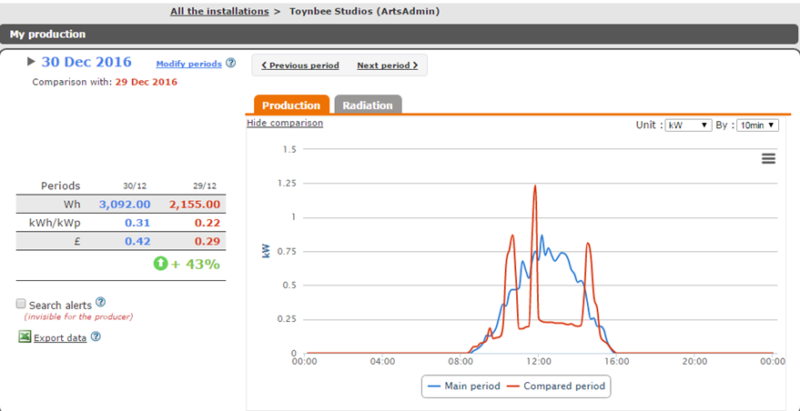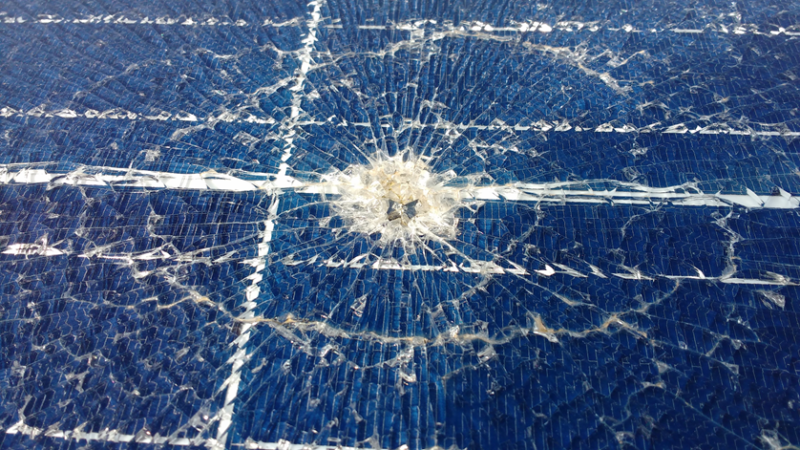“A south facing roof is good but certainly not essential. Indeed a flat roof can be used to best advantage with panels pitched at 10 degrees facing east and west, rather than south, which requires gaps between rows to prevent shading. An east-west array will not only accommodate more panels – more than offsetting the sub-optimal orientation – but also increase the generation in the evening, when electricity is now most expensive. And of course a lot of the light is reflected from clouds making orientation immaterial.
Our first East West system (at Toynbee Hall Studios) now suffers shading from rampant development in the city, and as this graph above illustrates, a cloudy day (the blue line) may generate more electricity than a sunny, partially shaded one (the red line.) Planning law in this area is still evolving but last year a High Court judge ruled that the blocking of light reaching nearby solar panels is a material factor for authorities considering planning applications.”


